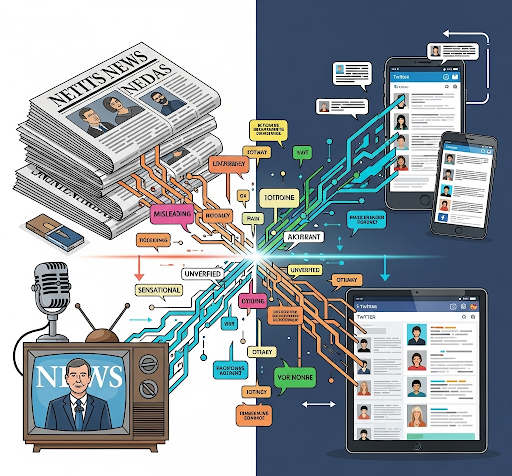Famoid Buy Real IG Fans and Understand Media’s Influence in Society
Today, social media platforms have become powerful tools for communication and influence. Many individuals and businesses seek to expand their online presence through various means, including services like Famoid buy real IG fans. These services promise to boost social media metrics by providing authentic engagement from real users rather than automated bots. The appeal lies in the potential for increased visibility and credibility within competitive digital landscapes.
While these growth strategies focus on numerical success, they intersect with broader questions about how information spreads and shapes public perception. Understanding these dynamics requires examining the deeper connection that govern how we consume and interpret information in our daily lives.
Foundation of Information Processing
Media bias represents one of the most significant forces shaping how societies understand current events and form opinions. Traditional news outlets, social media platforms, and digital content creators all operate within frameworks that inherently contain subjective elements. These perspectives influence which stories receive coverage, how events are framed, and what context is provided to audiences.
The human brain naturally seeks patterns and confirmation of existing beliefs. This cognitive tendency, known as confirmation bias, makes individuals more likely to accept information that aligns with their preconceived notions while dismissing contradictory evidence. Media organizations, whether intentionally or not, often cater to these preferences to maintain audience engagement and loyalty.
Mechanisms of Influence in Modern Media

Different types of media bias manifest in various ways. Selection bias occurs when certain stories are chosen for coverage while others are ignored entirely. This gatekeeping function determines which issues enter public discourse and which remain invisible to mainstream audiences.
Framing bias involves presenting factual information within specific contexts that emphasize particular interpretations. The same event can appear differently depending on the language used, the experts consulted, and the historical background provided. These editorial choices impact how audiences understand complex issues.
Emotional Appeals and its Impact
Media outlets frequently employ emotional language and imagery to capture attention in crowded information environments. Stories that evoke strong emotional responses tend to go viral and remembered longer than neutral reporting. This tendency toward sensationalism can distort public understanding of actual risk levels and probability of various outcomes.
Digital Algorithms and Echo Chambers
Social media platforms use sophisticated algorithms to determine which content appears in users’ feeds. These systems prioritize engagement metrics such as likes, comments, and shares, often amplifying divisive or emotionally charged content over balanced reporting. The result is the creation of echo chambers where individuals primarily encounter information that reinforces their existing viewpoints.
This algorithmic curation extends beyond political content to influence perceptions about health, science, economics, and social issues.
Users may develop skewed understandings of scientific consensus or social trends based on the limited perspectives presented in their personalized content streams.
Long-term Societal Implications
The cumulative effect of media bias extends far beyond individual opinion formation. Public policy decisions, voting patterns, and social movements all reflect the broader information environment in which citizens operate. When large segments of the population consume fundamentally different versions of reality, democratic discourse becomes increasingly difficult.
Research indicates that exposure to diverse perspectives and high-quality journalism correlates with more nuanced understanding of complex issues. However, we can’t deny economic pressures on traditional media organizations. At the same time, the existence of fragmentation of audiences across digital platforms.

